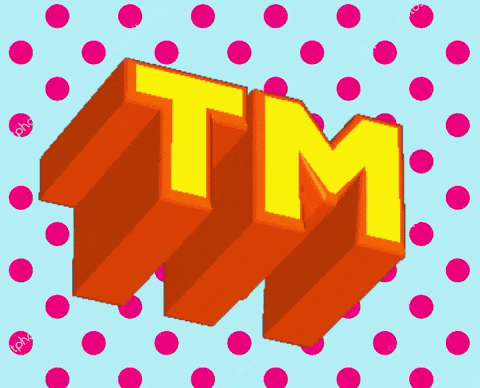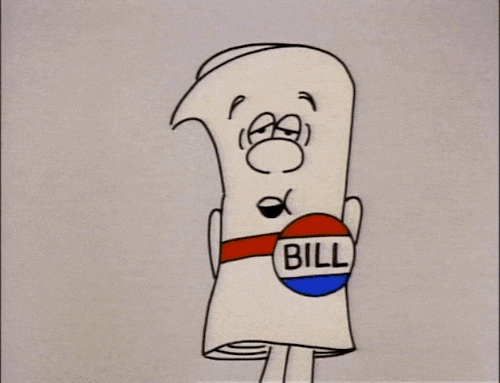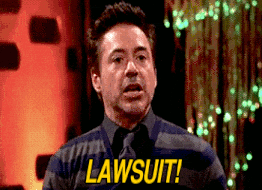- NIL Wire
- Posts
- 🏅 Interview with Janet Moreira
🏅 Interview with Janet Moreira

Hey there,
Today’s interview is with a Janet Moreira, an attorney with years of experience in trademark and copyright law. Considering the crossover from trademarking to NIL, it doesn’t take much to figure out why we thought she’d be an excellent interview for today’s edition.
We took advantage of this opportunity to ask Janet about a variety of legal issues with NIL — ranging from her legal predictions for college sports to high school NIL and even the now infamous Rashada recruitment investigation in Florida. We think you’ll enjoy this conversation a lot.
If you want to connect with Janet, here is her LinkedIn. Feel free to reach out. Now, to the interview!
— Cole, Justin and Collin

You follow the legal developments in NIL rather closely. What would you point to as the biggest legal development in NIL since the policy was introduced in 2021?
There are two developments that are worthy of discussion. First, the NCAA's decision to allow schools to assist student-athletes with NIL opportunities marks a transformative shift. This ruling acknowledges the significant role that universities can play in guiding athletes through the complexities of NIL deals. Universities can now provide structured support, ensuring that athletes understand their rights, negotiate fair contracts, and comply with regulations. This support is crucial, as many student-athletes may lack the resources or knowledge to manage these aspects on their own. I know for me personally, as a young pre-college student, and the first to go to college, navigating college applications was challenging enough! I cannot imagine a young student-athlete having to sort through legal documents with long-term implications on their own. This is a positive step to giving student-athletes more support.
In my opinion, the ruling highlights a broader realization that licensing opportunities could have been extended to student-athletes much earlier. This shift signals a recognition of past oversights and a move towards rectifying them, promoting greater equity and fairness in collegiate athletics. While the ruling is beneficial for student-athletes, it also underscores the ongoing concern about schools continuing to profit. from their athletes. Universities may leverage their resources and influence to attract top talent, potentially creating an environment where the focus shifts from education to commercial gain. It is essential to balance providing support with maintaining the educational mission of colleges and universities.
Second, the fact that there have been numerous bills introduced into the federal legislature signals the desire to have uniformity and consistency from all of the stakeholders in college sports. A unified federal framework would provide a consistent set of rules for all student-athletes, regardless of their location. This standardization is crucial for ensuring fairness and reducing the complexity of navigating varying state laws. There are a number of federal bills that have been introduced. Most recently, I am paying close attention to the recent bill introduced by two congressmen Rep. Russell Fry (R-S.C.) and Rep. Barry Moore (R-Ala.) called Protect the Ball Act which is intended to provide safe harbor for the entities that run college sports, i.e. the NCAA, and shield them from liability. Looking at whose interests need the most protecting when it comes to college sports, historically, it has not been the NCAA.

In the past, you’ve written about NIL and high school sports. What is the current state of NIL at the high school level, and how are athletes navigating the policy? What role do state legislatures play?
In Flux! I see that States are trending toward allowing NIL for high school athletes however, there is a lack of consistency here. The current state of NIL at the high school level is evolving, with policies varying significantly across states. While some states allow high school athletes to profit from their NIL rights, others have restrictions in place to maintain amateur status. Athletes in states with favorable NIL laws can sign endorsement deals, promote products on social media, and engage in other income-generating activities. They often rely on guidance from family, coaches, and legal advisors to navigate these opportunities while ensuring compliance with state regulations.
State legislatures play a crucial role in shaping NIL policies for high school athletes. They determine whether students can monetize their NIL rights and set the parameters for such activities. Legislative decisions are influenced by concerns about preserving the integrity of high school sports and ensuring equitable opportunities for all athletes. As the NIL landscape continues to develop, state laws will be pivotal in providing a framework that balances the interests of athletes, schools, and sports organizations.
What is, in your opinion, the biggest current problem with NIL from the athlete’s perspective? What about from a legal perspective?
From the athlete’s perspective and from a legal perspective, the biggest current problem with NIL is the lack of uniformity and oversight on a federal level. This fragmented regulatory environment creates significant challenges for athletes trying to navigate NIL opportunities. Different state laws and NCAA guidelines result in inconsistencies that complicate the process, making it difficult for athletes to fully understand their rights and obligations. Further, I think federal regulation will help to clarify what NIL is.
Currently, the marketplace for NIL deals can be categorized into two types: those made with brands and those facilitated by collectives. Brand deals involve legitimate endorsements and sponsorships where student-athletes promote products or services in exchange for compensation. These transactions are typically straightforward and align with the original intent of NIL regulations.
Conversely, deals arranged by collectives, which often lack a tangible product or service, raise significant concerns. These collectives frequently offer monetary incentives to student-athletes to influence their choice of school, a practice that may not comply with NCAA regulations regarding recruiting. Such arrangements are problematic as they can undermine the integrity of the recruitment process and may not prioritize the long-term interests and well-being of the student-athletes. The lack of regulation over collectives can lead to unfair advantages, potential exploitation, and an uneven playing field for athletes. Without a cohesive federal framework, athletes are left to manage a complex and often confusing landscape, which can hinder their ability to maximize NIL opportunities and protect their interests effectively. Ultimately, the student-athlete risks his/her ability to play college sports for the misdeeds of a mischievous collective.
The state of NIL is comprised of inconsistent State laws, a lack of federal legislation, unregulated collectives, and a governing body (the NCAA) that has created an environment of distrust among its constituents – colleges and student-athletes. Clear direction is essential for ensuring compliance with NIL regulations. Expecting student-athletes to navigate these complex rules and comply under the threat of ineligibility is unreasonable and places an undue burden on them.
Addressing these issues requires a coordinated effort to develop a standardized, federal approach to NIL regulation that provides clear, consistent guidelines while protecting the rights and interests of student-athletes.
Teaming up with
The N.I.L. Playbook, developed by NXT Level Holdings, is a comprehensive guide designed for college and high school student-athletes looking to learn more about their new opportunities.
The book is useful to coaches, administrators, parents, alumni and NIL industry pros to help navigate the rapidly evolving landscape in college and high school athletics.
The Playbook covers everything. Topics include: how to utilize social media to build your personal brand, how to seize potential N.I.L. partnerships, and what to look for in contracts — not to mention tons of other resources and strategies that student-athletes can use to enhance their profile and monetize their Name, Image and Likeness.
What’s going on with this lawsuit multiple states are bringing against the NCAA? Why are they suing the NCAA over recruitment issues, and how do you see the situation playing out legally?
The NCAA, facing a number of different challenges through a number of different lawsuits, adopted new rules allowing Division I athletes to transfer schools without losing a year of eligibility. The caveat being that, if you want to transfer more than once without losing eligibility, you need a waiver from the NCAA. In late 2023, several States sued the NCAA challenging this rule as a violation of U.S. antitrust law. Antitrust law is a set of regulations designed to promote fair competition and prevent monopolistic practices in the marketplace. Interestingly, the federal government, i.e. the Justice Department, has also joined the lawsuit earlier this year. See Ohio et al v. NCAA, Case No. 1:23-cv-011 pending in the United States District Court for the District of West Virginia.
In a recent statement, the Justice Department’s Jonathan Kanter was quoted as saying “college athletes should be able to freely choose the institutions that best meet their academic, personal and professional development needs.” This, in combination with other lawsuits filed against the NCAA directly on the issue of use of NIL, signals a monumental shift for the student athletes which will allow them to compete and get compensated fairly. I think this is a very exciting time for student-athletes but also one that signals the need to have a competent team around to help to navigate this ever-changing landscape. The days of unfettered NCAA control and the unpaid student-athlete are coming to an end and frankly, its about time.

Many have asked us about Jaden Rashada’s recent lawsuit against the University of Florida and coach Billy Napier, can you break down the specifics and give us your predictions for how you think it will unfold?
Rashada claims that Hathcock (on behalf of himself and Velocity Automotive), Castro Walker, and Coach Napier defrauded Rashada by falsely promising $13.85 million when such promise could not be fulfilled and neither they nor Hathcock had any intention of fulfilling it; that the parties conspired to defraud Rashada; and that these false misrepresentations perpetuated by defendants led Rashada to decommit from Miami, forgoing a $9.5 million deal.
Predictions:
Settlement Likely: Given the public nature of the case and potential negative publicity for all parties involved, a settlement outside of court is highly likely. Both parties may prefer to resolve the matter quietly to avoid further reputational damage.
Impact on NIL Regulations: This case could prompt the NCAA or other governing bodies to implement stricter guidelines and oversight on NIL agreements and recruitment practices.
Precedent for Future Cases: If the case goes to trial and Rashada wins, it could set a legal precedent that empowers other athletes to pursue legal action over breached NIL agreements. This could lead to more lawsuits and increased litigation in college sports.
Coach and Administrative Accountability: The outcome of this case could also affect the careers of the individuals involved. If found guilty of misrepresentation, there could be repercussions for coach Billy Napier and other university officials, including potential dismissals or other disciplinary actions.

